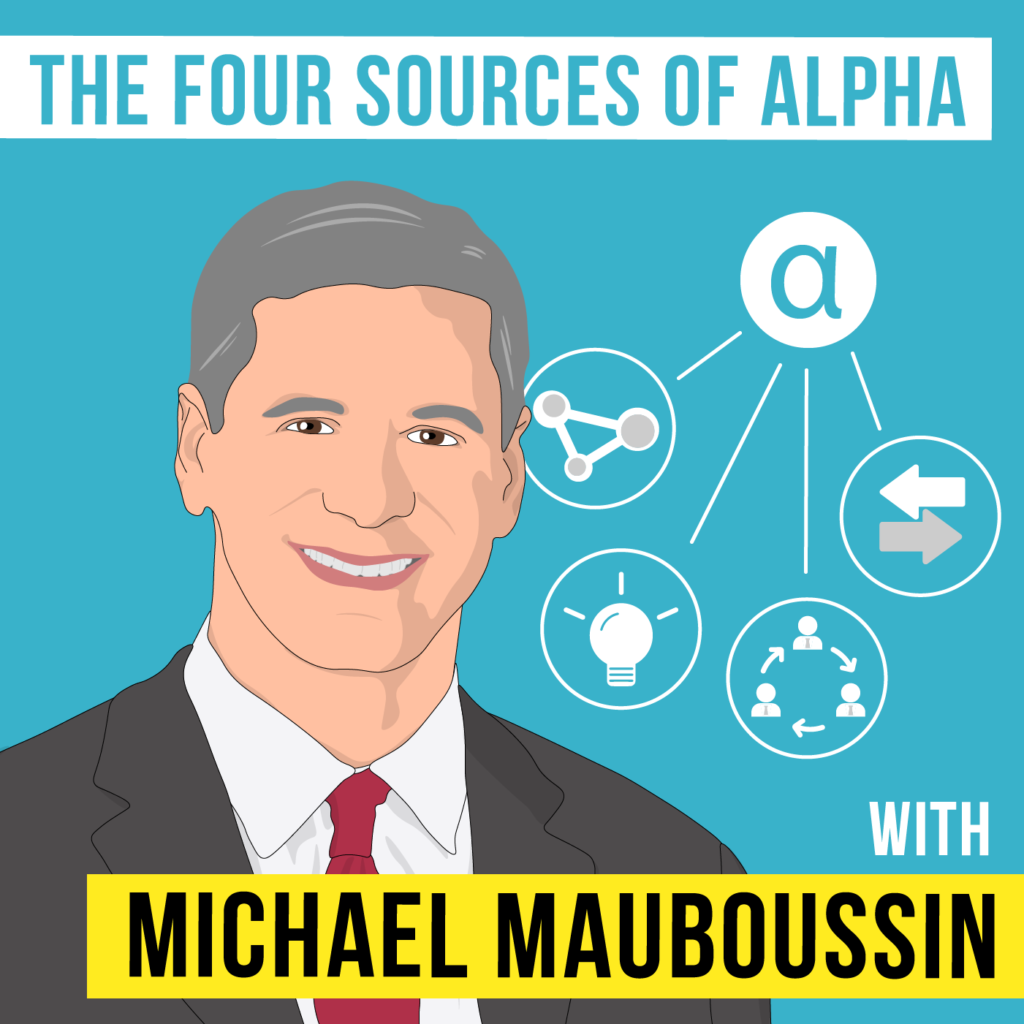
My guest this week for the third time is Michael Mauboussin.
If there is a major question about markets and investing, Michael has usually
written one of the best pieces of research on that topic. Today’s conversation
is a mix of several of his research pieces, but focuses on the sources of
alpha.
The framing of the conversation is the brilliant question “who is on the other
side” of a given trade. If you are buying, who is selling, and why? Knowing the
answer to this question is one key to understanding where excess return comes
from. As is usual with Michael, we also explore tons of other interesting ideas
that will serve as food for thought. Please enjoy.
For more episodes go to InvestorFieldGuide.com/podcast.
Sign up for the book club, where you’ll get a full investor curriculum and then 3-4 suggestions every month at InvestorFieldGuide.com/bookclub.
Follow Patrick on Twitter at @patrick_oshag
Show Notes
1:23 - (First Question) – An outline of the syllabus for the course he teaches
4:02 – What are smart people missing when it comes to decision making
5:33 – Why Michael went down the path of defining major investing concepts
7:41 – On the impossibility of informational inefficient markets
9:14 – Beware behavioral finance
12:03 – What are the behavioral errors that people can take advantage of in a trade
15:14 – Timing opportunities
17:25 – Modest Proposal Podcast Episode
17:47 – Where the analytical edge comes from
21:16 – Is there an advantage to exhibit time arbitrage
23:53 – Technical arbitrage
29:34 – What impact do flows into ETFs play on the market
32:25 – Informational edge and how you source that edge
36:39 – Biggest changes that he has seen on the buy side
43:18 - How would Michael apply this as a sports GM
48:35 – His views on stock buybacks
51:02 – The Outsiders: Eight Unconventional CEOs and Their Radically Rational Blueprint for Success
52:55 – EBIT to EBITDA paper
54:43 – What Does a PE Multiple Mean?
59:28 – The concept of benign myths
1:02:06 – What the future holds of Michael
1:04:17 – The Myth of Capitalism: Monopolies and the Death of Competition
/rating_on.png)
/rating_half.png)
Great conversation! I found the discussion on ETF flows particularly interesting. I’ve done some work on ETF flows as a contra-indicator for future performance of a sector. See hereL https://alphascientist.com/investor_flows.html for a blog post on the subject. Scroll about halfway down to see the results.
Short version, almost every ETF I tested (incl asset class, style, sector, country) underperformed after inflows. My hypothesis: the underlying sector gets a boost in the short term from the flows (“demand-based return”?) and the ETF’s NAV rises in accordance. When flows neutralize or reverse, prices of underlying assets revert to their true value.
Very interesting opportunities to apply this to the underlying assets as well, as Patrick and Michael discuss. I’ve done some work on that but not enough.